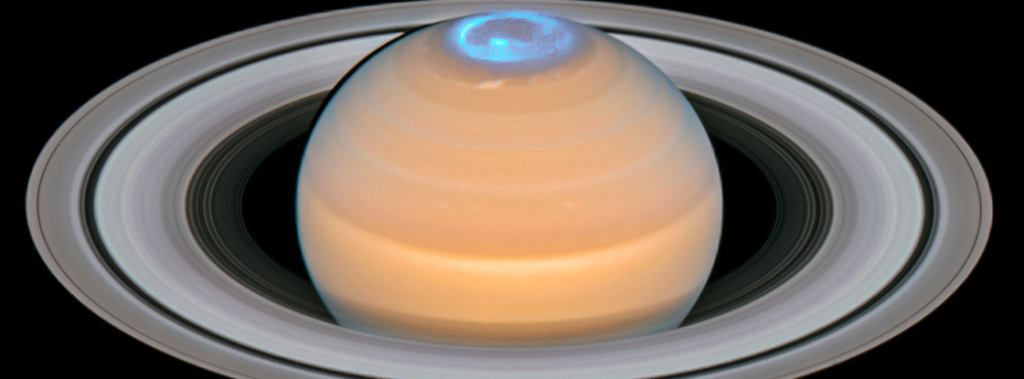Washington: New analysis of data from NASA’s Cassini mission may finally explain why the upper layers in the atmospheres of gas giants — Saturn, Jupiter, Uranus and Neptune — are hot, just like Earth’s.
As unlike Earth, the Sun is too far from these outer planets to account for the high temperatures, their heat source has been one of the great mysteries of planetary science.
Auroras at the planet’s north and south poles might be keeping the upper layers of Saturn, and possibly the other gas giants so hot, according to the findings published in the journal Nature Astronomy.
Electric currents, triggered by interactions between solar winds and charged particles from Saturn’s moons, spark the auroras and heat the upper atmosphere.
“The results are vital to our general understanding of planetary upper atmospheres and are an important part of Cassini’s legacy,” said author Tommi Koskinen, a member of Cassini’s Ultraviolet Imaging Spectograph (UVIS) team.
“They help address the question of why the uppermost part of the atmosphere is so hot while the rest of the atmosphere — due to the large distance from the Sun — is cold.”
Managed by NASA’s Jet Propulsion Laboratory in Southern California, Cassini was an orbiter that observed Saturn for more than 13 years before exhausting its fuel supply.
The mission plunged it into the planet’s atmosphere in September 2017, in part to protect its moon Enceladus, which Cassini discovered might hold conditions suitable for life.
But before its plunge, Cassini performed 22 ultra-close orbits of Saturn, a final tour called the Grand Finale.
It was during the Grand Finale that the key data was collected for the new temperature map of Saturn’s atmosphere.
For six weeks, Cassini targeted several bright stars in the constellations of Orion and Canis Major as they passed behind Saturn.
As the spacecraft observed the stars rise and set behind the giant planet, scientists analysed how the starlight changed as it passed through the atmosphere.
Measuring the density of the atmosphere gave scientists the information they needed to find the temperatures.
They found that temperatures peak near the auroras, indicating that auroral electric currents heat the upper atmosphere.
And both density and temperature measurements together helped scientists figure out wind speeds.
Understanding Saturn’s upper atmosphere, where the planet meets space, is key to understanding space weather, and its impact on other planets in our solar system and exoplanets around other stars.
